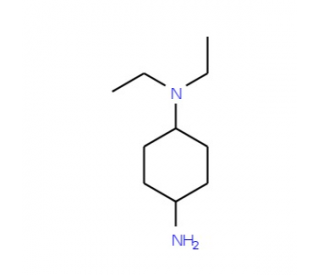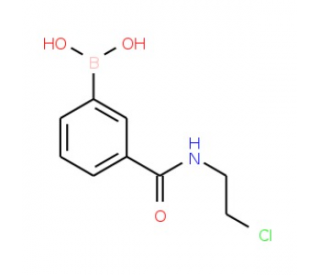详细说明
Species Reactivity
Human
Specificity
Detects human DC‑SIGN/CD209 on transfected NIH/3T3 cells and on monocyte derived dendritic cells. Does not react with parental mouse cells or irrelevant transfectants, such as human DC-SIGN2.
Source
Monoclonal Mouse IgG 2B Clone # 120507
Purification
Protein A or G purified from hybridoma culture supernatant
Immunogen
NIH-3T3 mouse embryonic fibroblast cell line transfected with human DC‑SIGN/CD209
Formulation
Lyophilized from a 0.2 μm filtered solution in PBS with Trehalose. *Small pack size (SP) is supplied as a 0.2 µm filtered solution in PBS.
Endotoxin Level
<0.10 EU per 1 μg of the antibody by the LAL method.
Label
Unconjugated
Applications
Recommended
ConcentrationSample
Western Blot
1 µg/mL
Recombinant Human DC-SIGN Fc Chimera (Catalog # )
Flow Cytometry
2.5 µg/10 6 cells
See below
Immunohistochemistry
8-25 µg/mL
Immersion fixed paraffin-embedded sections of human lymph node
Adhesion Blockade
The adhesion of NIH-3T3 mouse embryonic fibroblast cells (5 x 10 4 cells/well) to immobilized Recombinant Human ICAM-3/CD50 Fc Chimera (Catalog # , 5 µg/mL, 100 µL/well) was maximally inhibited (80-100%) by 5 µg/mL of the antibody.
CyTOF-ready
Ready to be labeled using established conjugation methods. No BSA or other carrier proteins that could interfere with conjugation.
Immunocytochemistry
8-25 µg/mL
See below
Please Note: Optimal dilutions should be determined by each laboratory for each application. are available in the Technical Information section on our website.
Data Examples
Flow Cytometry | Detection of DC‑SIGN in Human DC‑SIGN Transfected 3T3 Mouse Cell Line by Flow Cytometry. Human DC‑SIGN and DC‑SIGN2 transfected 3T3 mouse embryonic fibroblast cell line were stained with Mouse Anti-Human DC‑SIGN Monoclonal Antibody (Catalog # MAB161, filled histograms) or isotype control antibody (Catalog # , open histogram), followed by Phycoerythrin-conjugated Anti-Mouse IgG F(ab')2 Secondary Antibody (Catalog # ). |
Flow Cytometry | Detection of DC‑SIGN in Human Monocyte Derived Dendritic Cells by Flow Cytometry. Human monocyte derived dendritic cells were stained with Mouse Anti-Human DC‑SIGN Monoclonal Antibody (Catalog # MAB161) followed by PE-conjugated anti-mouse IgG (Catalog # F0102B) and Anti-Human B7-2/CD86 Fluorescein-conjugated Monoclonal Antibody (Catalog # ). Quadrant markers were set based on control antibody staining (Catalog # ). |
Immunocytochemistry | DC-SIGN in Human Dendritic Cells. DC-SIGN was detected in immersion fixed mature human dendritic cells using Mouse Anti-Human DC-SIGN Monoclonal Antibody (Catalog # MAB161) at 10 µg/mL for 3 hours at room temperature. Cells were stained using the NorthernLights™ 557-conjugated Anti-Mouse IgG Secondary Antibody (yellow; Catalog # ) and counterstained with DAPI (blue). View our protocol for . |
Preparation and Storage
Reconstitution
Reconstitute at 0.5 mg/mL in sterile PBS.
Shipping
The product is shipped at ambient temperature. Upon receipt, store it immediately at the temperature recommended below. *Small pack size (SP) is shipped with polar packs. Upon receipt, store it immediately at -20 to -70 °C
Stability & Storage
Use a manual defrost freezer and avoid repeated freeze-thaw cycles.
12 months from date of receipt, -20 to -70 °C as supplied.
1 month, 2 to 8 °C under sterile conditions after reconstitution.
6 months, -20 to -70 °C under sterile conditions after reconstitution.
Background: DC-SIGN/CD209
Human DC-Sign (dendritic cell-specific ICAM-3 grabbing nonintegrin; also CD209) is a member of the chromosome 19 C-type lectin family that includes DC-SIGN, DC-SIGN-related protein, CD23 and LSECtin (1). DC-SIGN was initially reported to be a 46 kDa, 404 amino acid (aa) type II transmembrane protein that contained a 40 aa cytoplasmic N-terminus, a 21 aa transmembrane segment, and a 343 aa extracellular C-terminus (2). The extracellular region contains a distal, 115 aa Ca++-dependent carbohydrate-binding lectin domain and a membrane-proximal linker segment that is composed of seven 23 aa repeats (2, 3). The lectin domain is believed to preferably bind mannose, either within the context of ICAM-3 (on T cells) or ICAM-2 (on endothelial cells) (2, 4, 5). DC-SIGN expression appears to be limited to dendritic cells (DC) and macrophages (6), and DC interaction with the ICAMs both aids DC cell trafficking and immunological synapse formation (7). Since the original report on DC-SIGN, multiple splice forms have been discovered, generating both membrane-bound and soluble forms (3). There are eight type A isoforms, all of which begin with the same 15 aa of exon 1a. Four contain the transmembrane region of exon II, and four do not (i.e., are soluble). Among these eight type A isoforms, only three retain the entire 343 aa found in the full length form described in reference #2 (the full length form is referred to as type I mDC-SIGN1A) (3). Five additional isoforms utilize an alternate start site, and these are referred to as type B isoforms. These all show a 35 aa cytoplasmic domain. One also has a transmembrane segment; four do not. Two of the five contain full, unspliced extracellular regions (3). All of this suggests enormous complexity in DC-SIGN biology. DC-SIGN is not well conserved across species. Human and mouse show little overall aa identity. In the lectin domain, however, human DC-SIGN shares 68% aa identity with mouse DC-SIGN (8). Human and rhesus monkey DC-SIGN share 91% aa identity over the entire extracellular region (8). A detailed description of the additional properties of this monoclonal antibody (MAB161) have been published (9, 10).
References:
Liu, W. et al. (2004) J. Biol. Chem. 279:18748.
Curtis, B.M. et al. (1992) Proc. Natl. Acad. Sci. USA 89:8356.
Mummidi, S. et al. (2001) J. Biol. Chem. 276:33196.
Su, S.V. et al. (2004) J. Biol. Chem. 279:19122.
Cambi, A. et al. (2005) Cell. Microbiol. 7:481.
Serrano-Gomez, D. et al. (2004) J. Immunol. 173:5635.
Geijtenbeek, T.B.H. and Y. van Kooyk (2003) Curr. Top. Microbiol. Immunol. 276:32.
Baribaud, F. et al. (2001) J. Virol. 75:10281.
Wu, L. et al. (2002) J. Virol. 76:5905.
Baribaud, F. et al. (2002) J. Virol.76:9135.
Long Name:
Dendritic Cell-specific ICAM-3-grabbing Non-integrin 1
Entrez Gene IDs:
30835 (Human); 170786 (Mouse)
Alternate Names:
CD209 antigendendritic cell-specific intracellular adhesion molecules (ICAM)-3 grabbingnon-integrin; CD209 molecule; CD209; CDSIGNHIV gpl20-binding protein; CLEC4L; CLEC4LC-type lectin domain family 4 member L; DCSIGN; DC-SIGN; DC-SIGN1; DC-SIGN1C-type lectin domain family 4, member L; DC-SIGNMGC129965; Dendritic cell-specific ICAM-3-grabbing non-integrin 1










 粤公网安备44196802000105号
粤公网安备44196802000105号